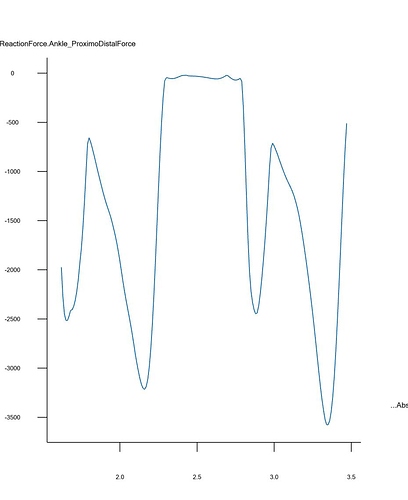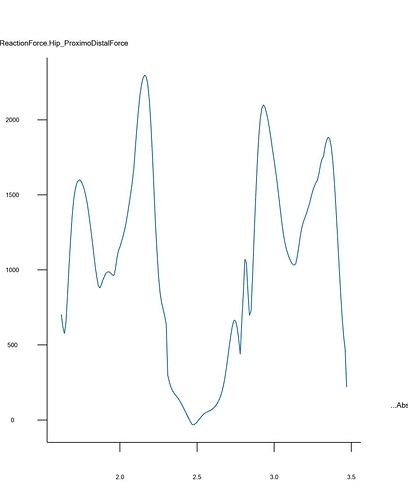Hi Dwan
I agree that the forces are probably too large. No one has ever measured the real forces in intact knees. But it is bad tendency of musculoskeletal models to over predict the forces, if the parameters are not carefully tuned. And tuning can be dangerous since we don't know what the true forces are.
Also, keep in mind what coordinate system the forces are expressed. The proximo-distal knee contact force are in the coordinate system of the thigh (i.e. along the thigh). You can define the output in any way you want if you define your own output measures.
How inverse dynamics is calculated in the AnyBody modeling system?
That is too broad a question to answer in details here. But there is no magic. You can look up these things in physics text books, and litterature on musculoskeletal models. The equation of motion are balanced, while minimizing the muscle activation (typically a third order criterion).
My experience is that models are sensitive to marker positions. For the ankle the forces are almost entirely given by the external force, foot scaling and marker positions. So try with different marker positions at the heel and see how it affect the forces. Another problem at the ankle is the subtalar joint. If that is just a tiny bit inaccurate the system recruits a lot of stabilising ankle muscles which contributes to the ankle joint force. So simplifying the ankle by adding a reaction force to the subtalar joint can also give you more realistic compression forces.
The knee is another case. The position of the knee joint shouldn't deviate more that few centimeter from reality before you get forces are that +/- BW. Another important factor at the knee is the strength ratio between gastrocnemius and soleus. This ratio is definitely not correct with the simple muscle model used in the example. This causes the system to recruit gastroc to much at toe-off leading to higher forces at the knee and hips. The hill type muscle model should in theory handle this, since gastroc should lose strength at that place in the gait cycle. But the current calibration procedures doesn't seem to handle that. New ways to calibrate the muscle models is something we are working on. But you can easily change the model to get the strength you believe are correct. It greatly reduces the second peak in the knee contact force.
Hip forces highly influenced by the knee forces and the marker positions at the Pelvis. If you work on your own model I can only recommend that you make a sensitivity study with different hip marker positions on the model. If the true position of the hip joint is off by one or two centimeter the contact forces can easily be +1BW.
- is it errors in the sample file?
I don't know of any errors. But if you spot something that looks odd please share it. The is likely a great variation in the contact forces between people, but it is hard to really know for sure. What we really needed was an example file where we knew the true marker positions in relations to the bony landmarks. For example, a file with palpated virtual markers. But I haven't come across a file like that yet.
I hope this helps you a bit when creating your own models. The example in the AMMR pretty much shows you the result you can expect if you don't do anything to fine tune parameters. The models can still be used to answer"what if" questions where model trends are important. If you want to see how accurate simulations can be then take a look at the work by Marra et al. (2015). That paper won the ASME Grand Challenge Competition to predict in vivo knee loads.
Best wishes,
Morten




